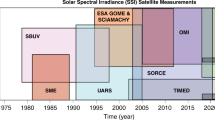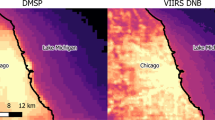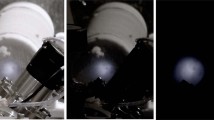Abstract
THE radio-frequency emissivity of the sun considered as black body is proportional to per unit frequency increment, where T is the temperature of the iadiating region, and X is the wave-length of the radiation. The sensitivity of radio equipment is now 6h that it is possible to detect this radiation on th shorter wave-lengths in the radio spectrum. In particular, Reber1 and Southworth2 have measured it on short radio wave-lengths, using highly directive aerial systems. Appleton3 has pointed but that it should be impossible to detect this temperature radiation at the longer radio wave-lengths, owing to the rapid falling off of solar emissivity, combined with the impracticability of using highly directive aerials on these wave-lengths. He and others4 suggest that the radiations which are observed on the longer wavelengths, and which appear to be correlated with sun-spots, cannot be thermal in origin, since such an explanation would require solar temperatures of the order one million degrees and upwards. There is little doubt that these views, so far as they refer to temperatures upwards of 106 degrees, must be correct, especially in the light of recent evidence5,6 showing that at such times the radiation comes from restricted areas in the immediate vicinity of sunspots. It is the purpose of this note to point out, however, that at such wave-lengths we should expect thermal radiation corresponding to values of T downwards from 10 degrees to the familiar surface temperature of order 104 degrees.
This is a preview of subscription content, access via your institution
Access options
Subscribe to this journal
Receive 51 print issues and online access
$199.00 per year
only $3.90 per issue
Buy this article
- Purchase on Springer Link
- Instant access to full article PDF
Prices may be subject to local taxes which are calculated during checkout
Similar content being viewed by others
References
Reber, Astrophys. J., 100, 279 (1944).
Southworth, J. Franklin Inst., 239, 285 (1944).
Appleton, Nature, 156, 534 (1945).
Pawsey, Payne-Scott and McCready, Nature, 157, 158 (1946).
Pawsey, Payne-Scott and McCready, in the press.
Martyn, Nature, 158, 308 (1946).
Baumbach, Ast. Nach., 263, 121 (1937).
Chapman and Cowling, "Mathematical Theory of Non-Uniform Gases" (Camb. Univ. Press, 1939), 177.
Edlen, Ark. f. mat. Ast. Fys., 28 B, No. 1 (1942).
Southworth, J. Franklin Inst., 241 (March 1946).
Author information
Authors and Affiliations
Rights and permissions
About this article
Cite this article
MARTYN, D. Temperature Radiation from the Quiet Sun in the Radio Spectrum. Nature 158, 632–633 (1946). https://doi.org/10.1038/158632a0
Issue Date:
DOI: https://doi.org/10.1038/158632a0
Comments
By submitting a comment you agree to abide by our Terms and Community Guidelines. If you find something abusive or that does not comply with our terms or guidelines please flag it as inappropriate.



